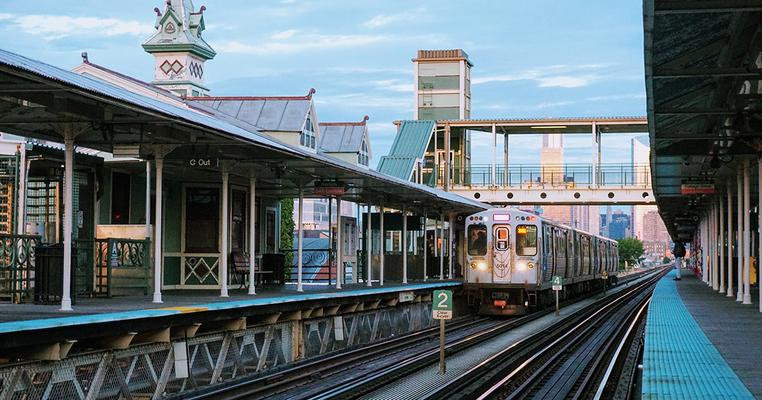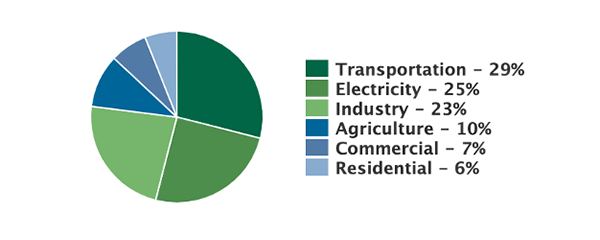
Walkable Cities Can Benefit the Environment, the Economy, and Your Health
Imagine this: working, eating, learning, shopping, and relaxing all without ever having to sit behind a wheel of a car.
For those living in many American cities, a walkable neighborhood like this seems out of reach. However, for city dwellers residing in Europe or Asia, strolling from place to place is a way of life. Why is that the case?
The term “walkability” means exactly what it sounds like: how easy it is to travel around a neighborhood on your own two feet. Walk Score, a website that rates and ranks the walkability of cities, reports that 141 cities in the United States have an average score of 48 out of 100. On the other side of the world, 95% of Chinese cities achieved a Walk Score of 60 points or above.
This disparity is mainly because many American metro areas were built with car travel in mind. But experts agree: highly walkable neighborhoods are better for the environment, the economy, and our health.
You Can’t Spell “Carbon” Without “Car”
With nearly 290 million cars on the road in the US, it’s no surprise that the transportation sector is now the largest emitter of greenhouse gases.

Image source: Environmental Protection Agency
Fifty-eight percent of those emissions come from light-duty vehicles, like the passenger cars millions of Americans depend on to shop for groceries and commute to work.
Despite having about the same number of restaurants, bars, and coffee shops, a Chicagoan can walk to an average of five of those places within five minutes, while a Houston resident will find 0.5 dining options on the same walk. Unsurprisingly related, average gasoline consumption per capita is about 200 gallons higher in Houston compared to Chicago.
Building amenities within walking or biking distance of residential areas can decrease the amount and length of car trips that are needed, therefore decreasing the amount of carbon emissions and other pollutants that come out of a car’s tailpipe.
Good for Business
Investing in walkable cities shouldn’t be a hard sell, considering the value it adds to local economies. Walkable cities are attractive, and it shows.
A study found that each additional Walk Score point was associated with an increase of between $500 and $3,000 in home values (but that doesn’t mean it can’t be affordable, more on that later). At the same time, a majority of millennials, who are expected to make up half of the American workforce by 2025, have expressed a desire to live in a place where they don’t have to own a car. Businesses keen on attracting these young professionals understand that and are moving from sprawling suburbs to condensed cities, bringing along improved productivity and economic development.
Making My Way Downtown, Walking Fast
According to the AAA, it costs the average American over $9,500 a year, or 13% of average household expenditures, to own a car. This is a much higher percentage compared to Europeans. And it gets worse for lower-income Americans, who spend between 17% and 29% of their income on cars.
Comparatively, moving from point A to point B is much cheaper on foot. An unlimited annual pass on New York’s MTA buses and subways and Chicago’s CTA buses and trains cost $1,524 and $1,260, respectively.
Plus, not only is it healthier for your wallet, it’s healthier for you too.
Walkable neighborhoods allow for more physical activity to be incorporated into residents’ daily lives. Studies have shown that rates of obesity and diabetes are lower in more walkable neighborhoods. In a separate study, people in New York County, the most compact city in the study, walked 80 minutes more each month and weighed an average of six pounds less than people living in Geauga County.
Six pounds may not seem like much, but that weight is not equally distributed, affecting some more than others and increasing the entire town’s risk of obesity-related diseases.
Living in a pedestrian-friendly area also improves your mental health.
Cities with easy access to public transportation and cultural and leisure activities promote happiness. Making neighborhoods more walkable isn’t just about making it easier for individuals to get around. It’s also about creating community and combatting loneliness. Walking around town more frequently increases opportunities to interact with neighbors and facilitates civic engagement.
How We Can Walk the Walk with Infrastructure
Public Transit
To make cities less car-oriented, we must replace the private car with alternative forms of transportation. That’s right: public transit. Public transit is cheaper and safer for the individual, while also providing economic opportunities by creating jobs and connecting people to work and businesses.
For buses and trains to be considered a viable choice for most people, they need to be safe, clean, reliable, and accessible. But adequate and inexpensive public transportation isn’t just going to build itself. We need massive buy-in and investment from local, state, and federal governments. While we’re at it, we should make sure that new public transit projects are as environmentally friendly as possible.
Zoning Laws and Affordable Housing
Traditionally, American cities were developed under single-use zoning codes. Homes, grocery stores, and offices were separated by blocks or even neighborhoods, making it harder for people to walk from one type of “use zone” to another. Advocating to prioritize mixed-used development is the key to preventing suburban sprawl.
Changing zoning laws can also help with making a more-walkable city more affordable too.
One example is inclusionary zoning laws that require a percentage of all new housing developments to meet affordability criteria. However, having an inclusionary-zoning ordinance in place is not enough to stop low-income residents from being priced out of their homes as cities attract wealthier people. We need federal dollars to be invested in affordable housing and provide public subsidies, like rental assistance, grants to state and local governments, and tax credits.
Biking Infrastructure
Bike lanes that are protected and connected can play a huge role in improving livability. Biking provides all the benefits of walking (cheap, clean, and calorie-burning) while also satisfying the need for speed. The low end of the average cycling speed is 10 miles per hour compared to the average walking speed of three miles an hour, which means that biking can get you to your destination more than three times faster.
The main barriers to cycling are perceived biker safety and connectivity issues. The first problem can be solved by putting more cyclists on the road and establishing a clear right of way for cyclists. Connectivity issues can be fixed by building bike-friendly resources that are focused around destinations like public transit, schools, and workplaces. Municipalities within one region should also work together to ensure that bike lanes connect between communities.
Pedestrian Safety
To achieve increased walkability, pedestrians must feel compelled to walk downtown. This means shifting focus away from cars by replacing multilane streets with bike lanes and walkways.
Keeping the pedestrian out of danger should also be a priority. That includes building well-lit and tree-lined sidewalks and safe pedestrian crossings. Implementing traffic calming measures can also improve pedestrian safety. Building on-street, diagonal parking can create positive friction to slow down traffic, while simultaneously acting as a buffer between the sidewalk and the road. Other measures include narrowing roads, converting one-way streets into two-way streets, and building roundabouts and traffic circles.
What You Can Do
Improving walkability in cities is a powerful way to reduce emissions, while improving the quality of life for residents. It’s undeniable that if we want American metro areas to pull this walkability thing off, we need to pass a strong infrastructure plan. Investing in public transit, affordable housing, and other infrastructure means investing in the American economy, the health of the American people, and the environment.
The current bipartisan infrastructure framework just isn’t enough to achieve an American future in climate resiliency and racial justice. We need bold climate action to be part of any infrastructure bill.
If you’re ready to help, join the Our Climate Moment campaign and activists in Climate Reality chapters across the country to continue the fight for climate legislation and organize for the changes we so desperately need.

